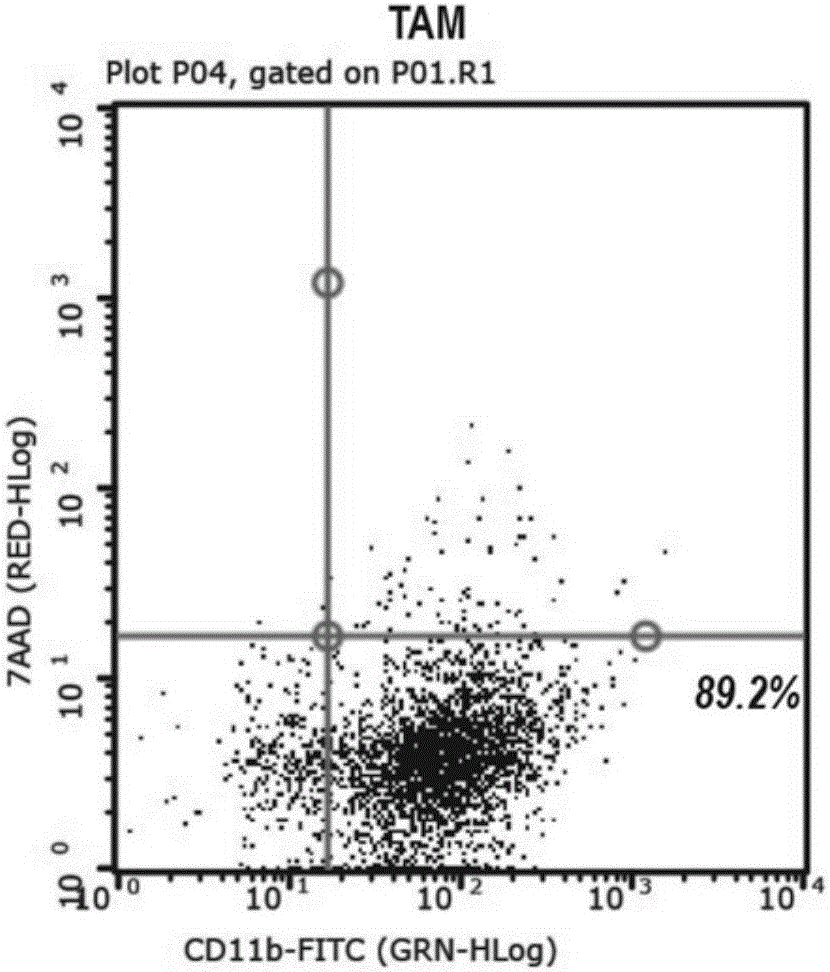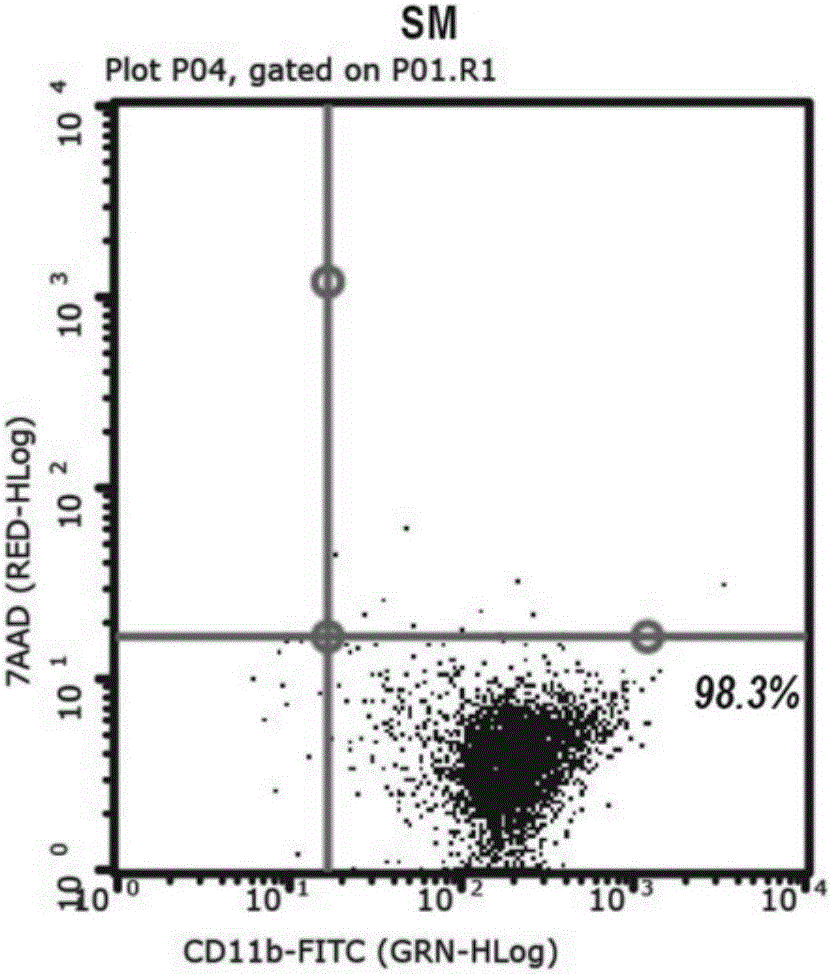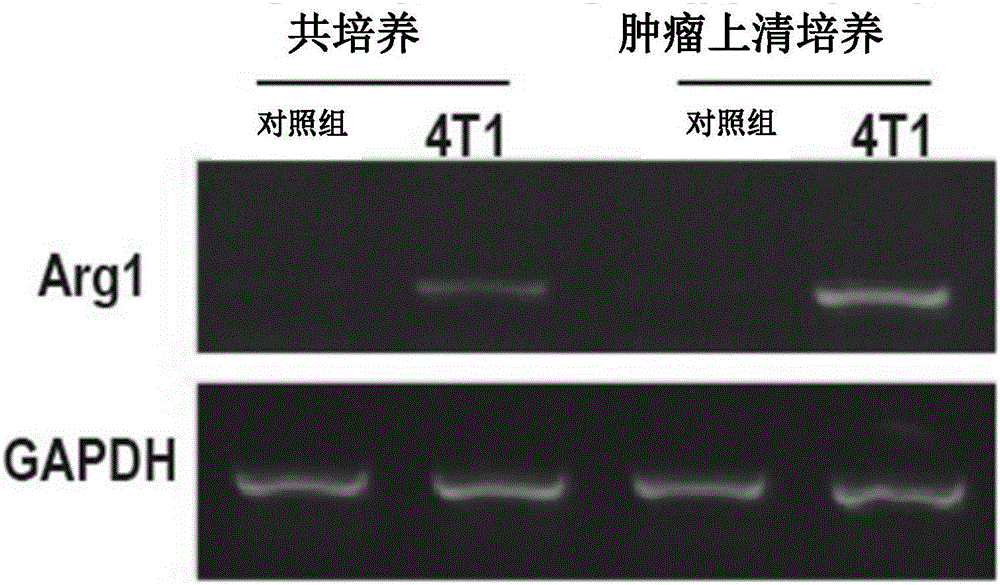Use of miR-100 inhibitor in cancer metastasis reduction
A technology of use and reagent, applied in the field of medicine
- Summary
- Abstract
- Description
- Claims
- Application Information
AI Technical Summary
Problems solved by technology
Method used
Image
Examples
Embodiment 1
[0043] Embodiment 1: Construction of mammary gland tumor mouse model
[0044] 1. Experimental animals
[0045] BALB / c female mice were used in the mammary gland tumor model mouse experiment, purchased through the Experimental Animal Center of the Institute of Basic Medical Sciences, Chinese Academy of Medical Sciences. All experimental mice were raised and vaccinated in SPF grade animal room. The temperature of the animal room was controlled at 19-24°C, the humidity was maintained at 50%-60%, and light and dark were alternated for 12 hours. The mouse feed and litter were all sterilized by high temperature, and the drinking water was sterilized by high temperature and high pressure. During the experiment, the state of the mice was observed in time, the litter was changed twice a week, and the feed and drinking water were replenished daily.
[0046] 2. Model building method
[0047] In this example, a mouse 4T1 cell line was used to establish a tumor model, which was describe...
Embodiment 2
[0072] Example 2: Transcriptome and microRNA sequencing and joint analysis of tumor-associated macrophages
[0073] After extracting RNA from tumor-associated macrophages (TAM) and spleen macrophages (SM) obtained in Example 1, RNA quality inspection was performed, and sequencing was arranged after passing the quality inspection. The selected sequencing platform was illumina Hiseq2500.
[0074] The amount of sequencing data per sample for microRNA is 20M (Table 1), and the amount of sequencing data for each sample of transcriptome mRNA is 10G. For the sequencing data obtained by microRNA and transcriptome, calculate the average quality of the base sequencing quality of each position on the read, and calculate the average quality value of each read, and count the number of reads with corresponding quality values, through the cumulative distribution The curve looks at the average mass distribution of the data to obtain a mass distribution map.
[0075] The q30% of microRNA (the...
Embodiment 3
[0091] Example 3. miR-100 is highly expressed in tumor-associated macrophages
[0092] Next, two different induction methods of tumor supernatant culture and tumor cell co-culture were carried out in vitro:
[0093] Tumor supernatant culture test group: the culture supernatant of 4T1 tumor cells was collected, mixed with fresh medium at a ratio of 1:2, and used as a conditioned medium for culturing RAW264.7 cells. Tumor cell co-culture experiment group: RAW264.7 cells were co-cultured with 4T1 cells, using a transwell chamber. Control group: only mouse monocyte RAW264.7.
[0094] Two methods induced mouse monocyte RAW264.7 cells to have the phenotype of tumor-associated macrophages. RT-PCR detected that the expression of Arg1 was significantly up-regulated in the two induced cells ( figure 2 ). The highly expressed microRNAs in eight candidate TAMs were verified again by qPCR in two induced cells ( image 3 , Figure 4 ). According to the verification results, most of ...
PUM
 Login to View More
Login to View More Abstract
Description
Claims
Application Information
 Login to View More
Login to View More - R&D
- Intellectual Property
- Life Sciences
- Materials
- Tech Scout
- Unparalleled Data Quality
- Higher Quality Content
- 60% Fewer Hallucinations
Browse by: Latest US Patents, China's latest patents, Technical Efficacy Thesaurus, Application Domain, Technology Topic, Popular Technical Reports.
© 2025 PatSnap. All rights reserved.Legal|Privacy policy|Modern Slavery Act Transparency Statement|Sitemap|About US| Contact US: help@patsnap.com



